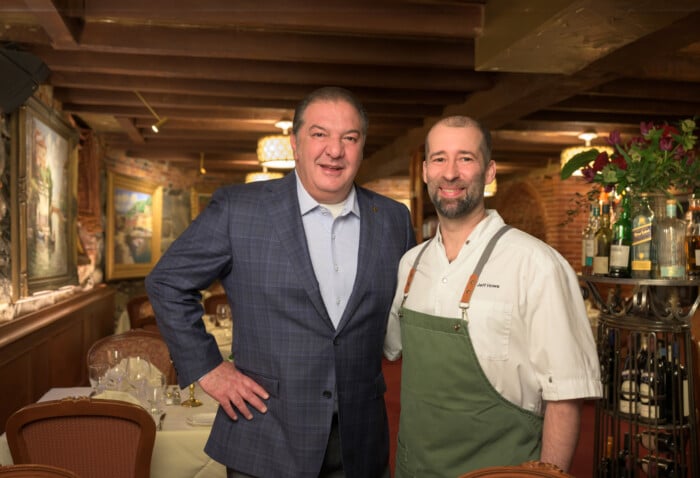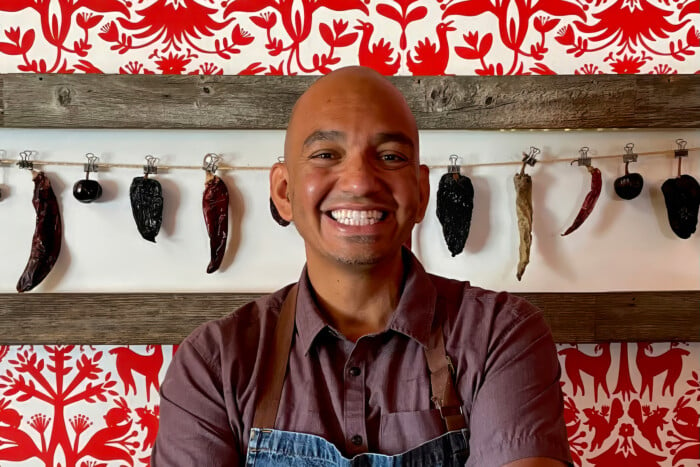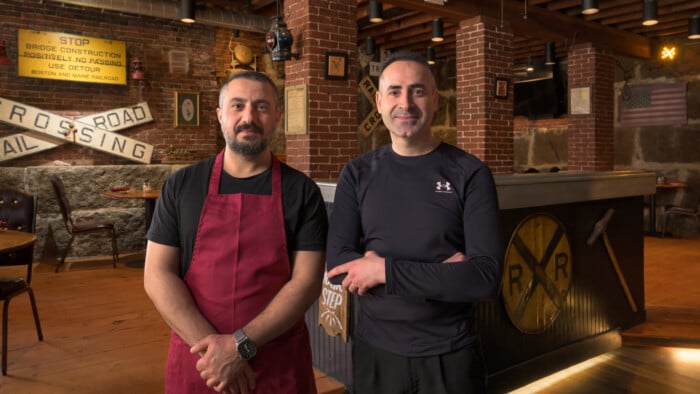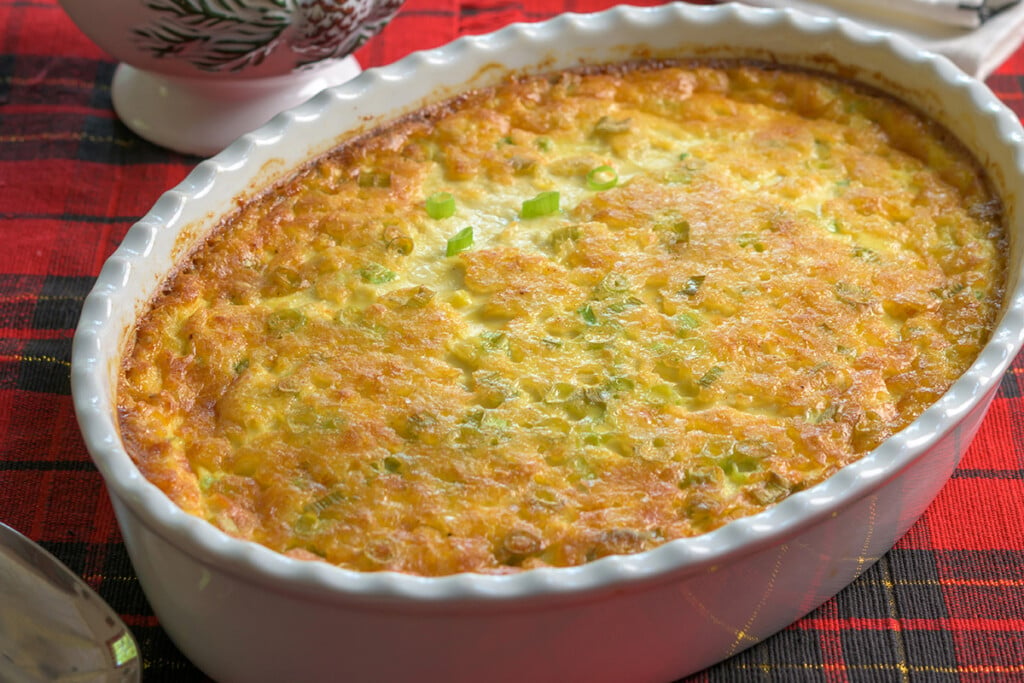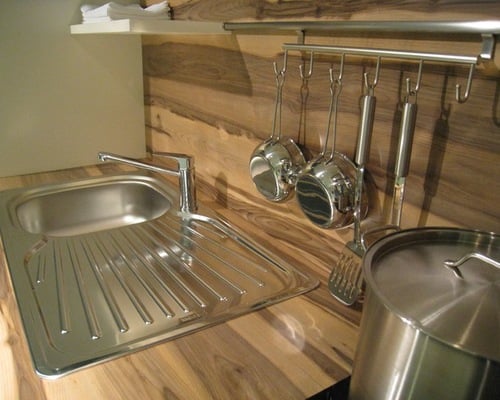As Good as it Gets with Laurie Schive
There’s no cutting corners on bread at artisanal bakery Blue Loon
As someone who loves to pull my own loaves from the oven, I am in awe of artisan bakers whose passion is to transform flour, water, salt and yeast into one of the world’s most historically significant, honored and desired foods: bread.
Blue Loon Bakery in New London is one place you can find these dedicated culinarians, among them Blue Loon’s co-owner and head bread baker, Laurie Schive, who is also the chairperson of the Bread Bakers Guild of America. I asked Laurie why she chose to get her hands into dough and pursue a career in baking artisan bread — so different from the soft and spongy mass-produced sandwich loaves that remind us of school lunch-box fare.
What is your background, and what drew you to becoming an artisan bread baker?
I had a career with the CIA (not the Culinary Institute of America) and while living overseas I started baking sourdough bread to relieve stress. I didn’t have any formal baking experience, but I loved the creativity and science behind this exercise.
My husband and I were living outside of D.C., and when our last child went off to college we talked about where we wanted to live. My husband is a Dartmouth College graduate and knew the Upper Valley area; I grew up in New Jersey and loved the rural feel and change of seasons in New England.
We had friends in New London, so decided to settle here. Before long, I realized the town had everything except an artisan bakery. So, I set out to change that! Before opening Blue Loon, I took professional courses at King Arthur Baking and the San Francisco Baking Institute, but most of my baking and small-business skills are self-taught.
Laurie’s answers reminded me of an old Italian saying: “e’ buono come il pane,” meaning, “as good as bread.” The phrase is often used when referring to the character of a person who is reliable and trustworthy. If you are as good as bread, that is as good as it gets.
Why the name Blue Loon?
Our whole family was involved in helping us create the idea for the bakery, but no one could come up with a name we really loved. It was our then 10-year-old granddaughter who suggested Blue Loon. We said, “Marissa, that’s a great name, but there’s no such thing as a Blue Loon.” Her reply was, “There are loons on the lakes in New London, and if there isn’t a blue loon, there should be.” Who could argue with that logic? So, Blue Loon was born. One of our sons came up with the logo — a Blue Loon with a wheat stalk for a wing.
What advice do you have for novice bread bakers?
Anyone can learn how to bake bread, and with a little effort you can make something that is close to miraculous. When I was first teaching myself, an experienced baker told me that “bread doesn’t need you as much as it needs time.” So I slowed down and enjoyed the process of getting my hands in the dough. Also, I suggest talking to bread bakers, both serious home bakers and professionals. I learned so much just by asking questions of other members in the Bread Bakers Guild of America (BBGA).
Tell me about the Bread Bakers Guild of America. And what is Camp Bread?
I’ve been a BBGA member since 2016 and the board chair since January 2023. We’re a nonprofit dedicated to the craft, culture, careers and community of bread baking, with an emphasis on providing education to aspiring bread bakers, production bakers and bakery owners. Our current focus is to increase our Spanish-language education for production bakers and to create a “business of baking” curriculum for new bakery owners, with a goal of helping them build sustainable, community-focused bakery businesses. The best thing is I get to go to the BBGA’s Camp Bread — a three-day baking conference held at Johnson & Wales University in March 2024. Three days of bread baking, eating and talking is my idea of heaven!
For the average consumer, do you think bread has a negative connotation as a carb with consequences?
Well, any food can have consequences if you eat too much of it. And many who buy what I’d call “industrial” bread at a supermarket don’t realize how many unrecognizable ingredients are in it — azodicarbonide and datem, for example. But I think the average customer buying their bread at a small artisan bakery like ours knows that they are getting high-quality, healthy food. Most of the breads we bake are naturally leavened (aka sourdough), and we also incorporate whole grains like whole wheat, whole rye, rye chops, flax and sunflower seeds into them. I’m always happy to talk ingredients and the benefits of good bread with customers — we even have a window looking into the kitchen so anyone can stop by to see exactly how we make the bread.
Muffuletta
Serves 6
 This impressive stuffed bread is chock-full of cured meats, cheese and pickled vegetables, all layered and compacted together in a country bread, such as a boule from Blue Loon. The origin of this
This impressive stuffed bread is chock-full of cured meats, cheese and pickled vegetables, all layered and compacted together in a country bread, such as a boule from Blue Loon. The origin of this
exceptional sandwich loaf comes by way of Italy, especially from the regions of Calabria and Sicily, and is known as a muffuletta.
Boule Bread
1 (round loaf) at least 6 to 7 inches in diameter and 2 inches high.
Salad Filling
8-ounce jar pickled mixed vegetables, drained and minced
½ cup pitted green olives in brine, drained and minced
¼ cup diced fennel and fennel leaves
½ cup diced sweet red peppers
1 teaspoon minced garlic
2 tablespoons extra-virgin olive oil
Salt to taste
Meat and Cheese Filling*
¼ pound thinly sliced Genoa salami
1/3 pound thinly sliced ham
1/3 pound thinly sliced capicola
½ pound thinly sliced mozzarella cheese
¼ pound thinly sliced provolone cheese
Directions
1. In a bowl, combine the mixed vegetables, olives, fennel, fennel leaves, peppers, garlic and olive oil. Set aside.
2. With a bread knife, cut a ½ -inch thick “lid” off the top of the bread and set aside. Remove the interior crumb of the bread, leaving about a ¾-inch-thick shell. Reserve the crumb of the bread for another use, such as for breadcrumbs.
3. Spread half the salad ingredients evenly in the bottom of the bread shell. Layer the meats and cheeses alternately on top of the salad, making as many layers to fill the bread until they are even with the rim of the bread. Spread the remaining salad over the top. Replace the bread lid and press down on the loaf with your hands while you wrap the loaf tightly in aluminum foil. Place a heavy weight such as a cast-iron skillet or two heavy cans on top of the bread and refrigerate it for at least 6 hours or, even better, overnight.
4. An hour before serving, remove the weights and foil and place the loaf on a serving plate. With a bread knife, cut it into wedges while it is still cold. Allow to stand for 20 minutes before serving.
*Note: Amounts given for filling are approximate and depend on the size of the bread.
Overnight Oven-Baked French Toast
Serves 8
 Wake up to this delicious version of French toast made with Blue Loon’s challah bread, ricotta cheese and a sauce of blueberries and raspberries. Prepare it the night before, and in the morning pop it in the oven. While it bakes, make the yummy fruit sauce topping.
Wake up to this delicious version of French toast made with Blue Loon’s challah bread, ricotta cheese and a sauce of blueberries and raspberries. Prepare it the night before, and in the morning pop it in the oven. While it bakes, make the yummy fruit sauce topping.
French Toast
12 to 14 ½-inch-thick slices challah or brioche-type bread (or enough for three layers)
1½ cups whole milk ricotta cheese, well drained
1/3 cup honey
1¼ teaspoons ground cinnamon
8 extra large eggs
1½ cups light cream or milk
¼ teaspoon salt
Directions
1. In a bowl with a handheld mixer, whip the ricotta cheese with the honey until smooth and uniform. Stir in the cinnamon. Set aside.
2. In another bowl, combine the eggs, cream and salt and beat on low speed until all the ingredients are well blended. Set aside.
3. Place a single layer of the bread slices in the base of a buttered 9-by-13-inch casserole dish (you may need a few small pieces to fill in any gaps). Spread half of the ricotta mixture evenly over the slices.
4. Top with a second layer of bread slices and spread the remaining ricotta cheese mixture over the slices. Top with the last layer of bread slices.
5. In a bowl, lightly beat the eggs with a whisk until they are well blended. Whisk in the cream and salt. Pour the mixture evenly over the top of the bread slices, allowing it to seep into the edges of the pan.
6. Cover the pan tightly with foil and place it in the refrigerator overnight.
7. When ready to serve, preheat oven to 350°F and bake for 30 minutes. Uncover the pan and bake 25-30 minutes longer, or until the top of the bread looks lightly browned. Allow to cool for 5 minutes, then cut into squares and top each piece with some of the fruit sauce. Serve immediately.
Fruit Sauce
1 cup water
1½ tablespoons cornstarch
2/3 cup sugar
1 cup fresh blueberries
1 cup fresh raspberries
Directions
In a medium saucepan off the heat, combine the water, cornstarch and sugar. Place the mixture over medium heat and cook, stirring until the mixture starts to thicken and coats the back of a spoon. Slowly add the blueberries and raspberries and gently fold them into the sugar mix. Keep sauce warm until ready to use.

